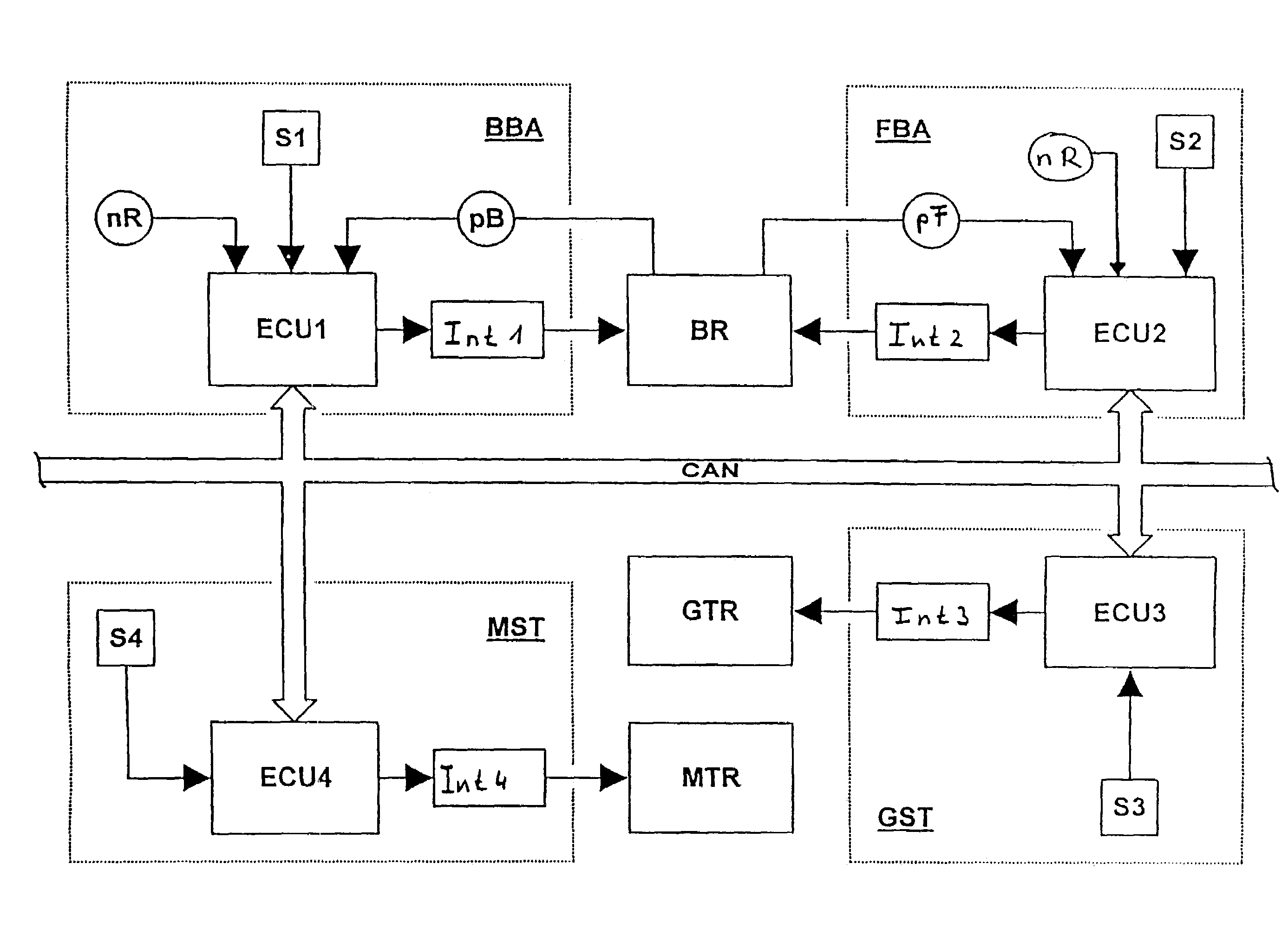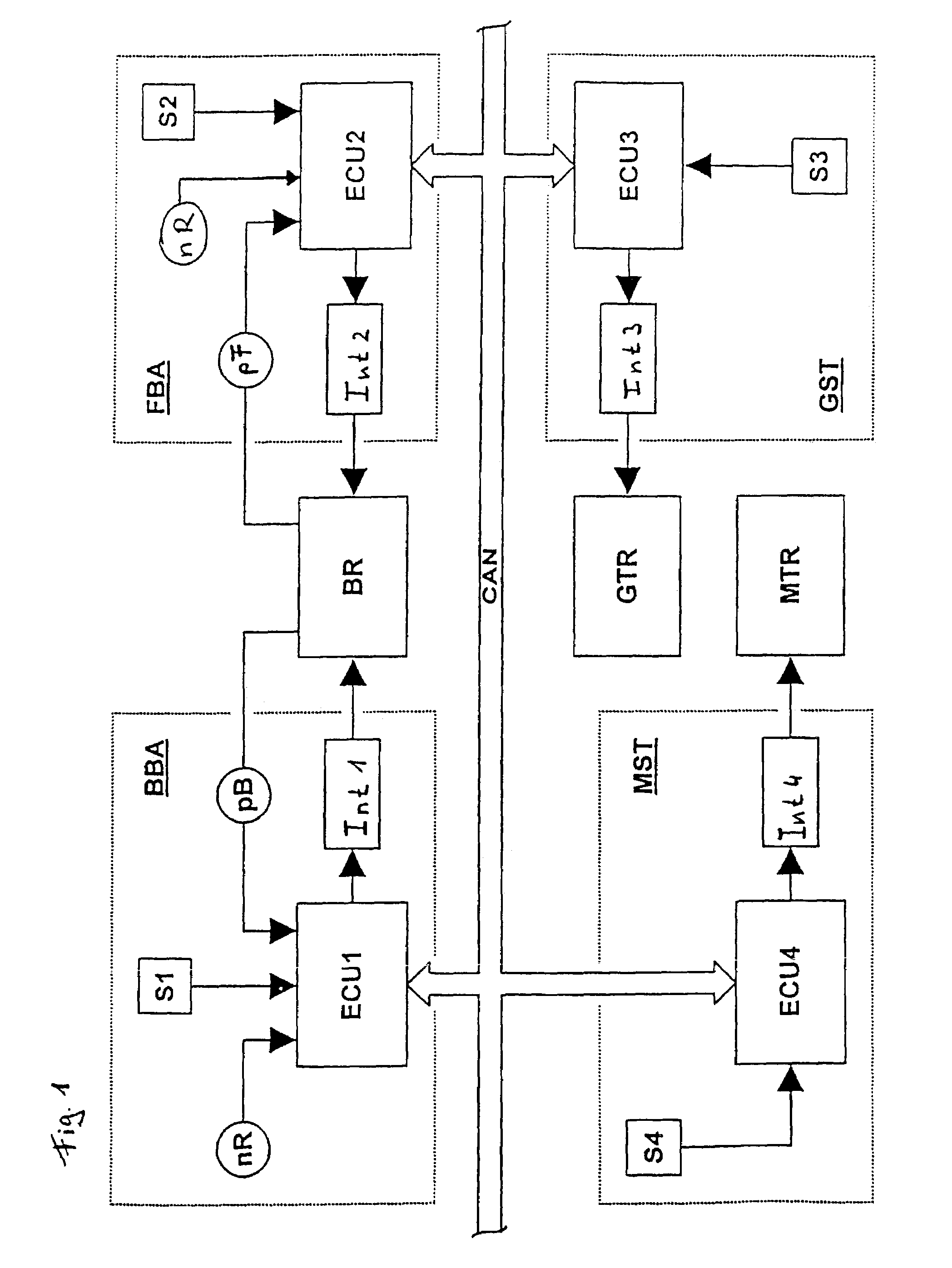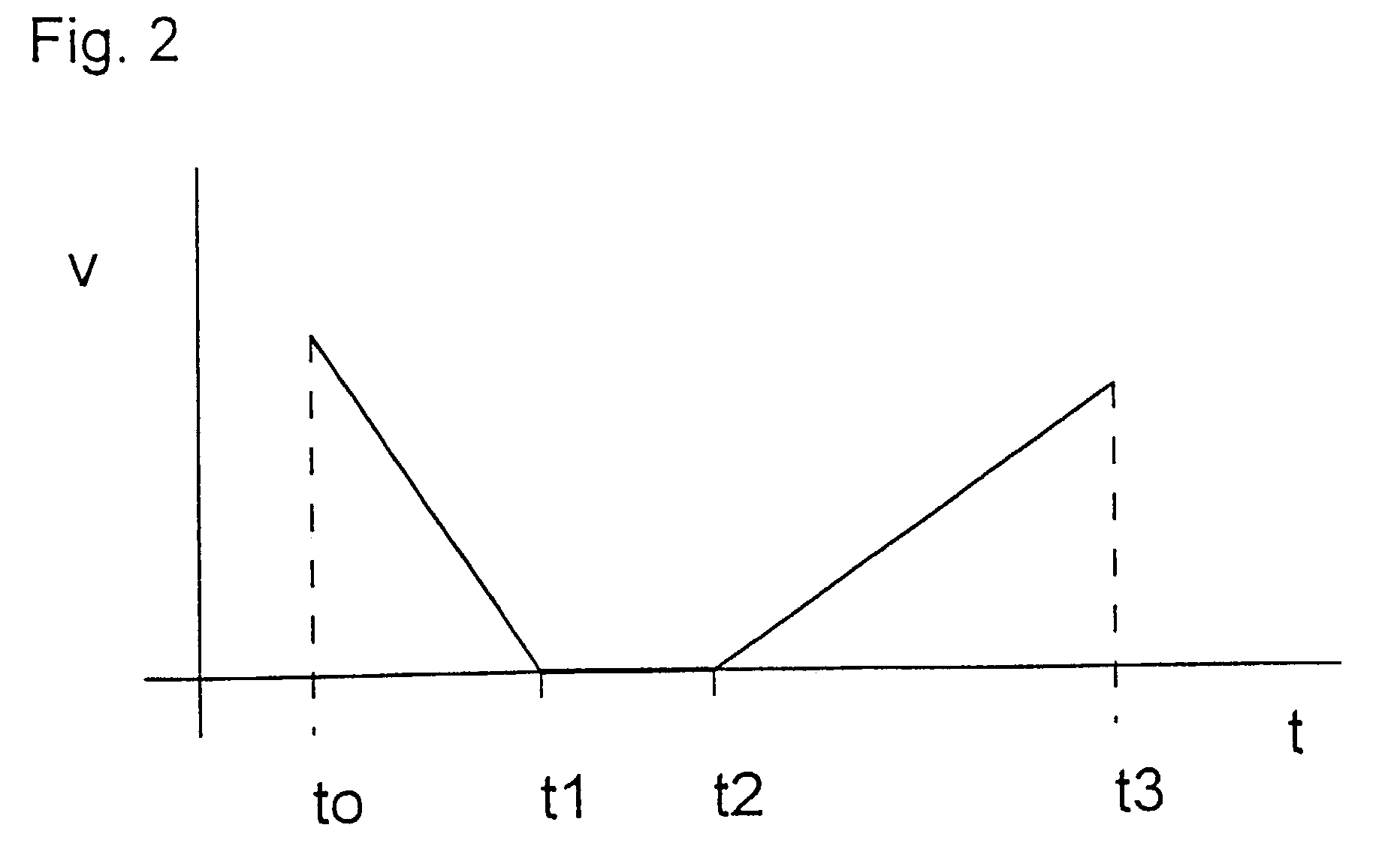Method and device for controlling the braking equipment of a motor vehicle
a technology for braking equipment and motor vehicles, which is applied in the direction of brake action initiation, braking systems, transportation and packaging, etc., can solve the problems of unsuitable parts for use in “, insufficient fixed predetermined braking force for holding the motor vehicle, and unwanted or uncontrollable traveling states
- Summary
- Abstract
- Description
- Claims
- Application Information
AI Technical Summary
Benefits of technology
Problems solved by technology
Method used
Image
Examples
Embodiment Construction
[0043]According to FIG. 1, braking equipment of a motor vehicle, which is not shown, comprises a controllable service brake system BBA and a controllable holding brake system FBA, which together or individually actuate brakes BR of the motor vehicle. A transmission control GST for a transmission GTR and an engine control MST for an engine MTR as further vehicle equipment (vehicle components), can be also seen in FIG. 1.
[0044]The service brake system BBA comprises a control unit ECU1, a sensor means S1 and sensors nR and bP. The control unit ECU1 serves to control the service brake system BBA using signals from the sensor means S1 and the sensors nR and pB. Quantities / parameters, which indicate an operation of the service brake system desired by a vehicle driver, are detected by the sensor means S1. Depending on the respective application, the sensor means S1 detects positions and / or movements of a brake pedal (not shown), positions of a brake light switch, positions and / or movements...
PUM
 Login to View More
Login to View More Abstract
Description
Claims
Application Information
 Login to View More
Login to View More - R&D
- Intellectual Property
- Life Sciences
- Materials
- Tech Scout
- Unparalleled Data Quality
- Higher Quality Content
- 60% Fewer Hallucinations
Browse by: Latest US Patents, China's latest patents, Technical Efficacy Thesaurus, Application Domain, Technology Topic, Popular Technical Reports.
© 2025 PatSnap. All rights reserved.Legal|Privacy policy|Modern Slavery Act Transparency Statement|Sitemap|About US| Contact US: help@patsnap.com



